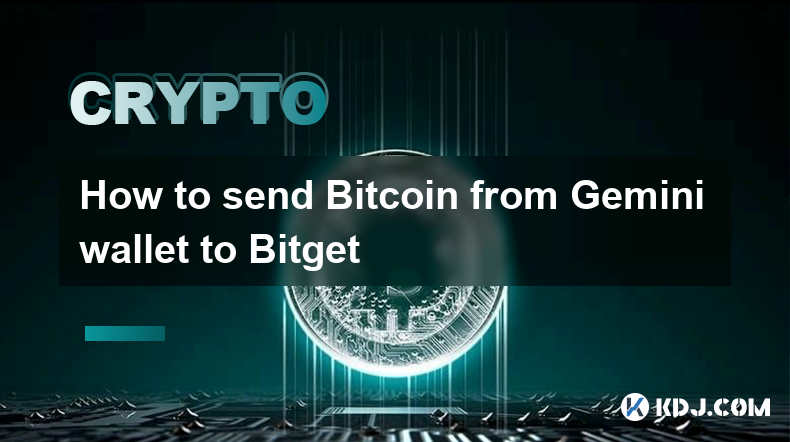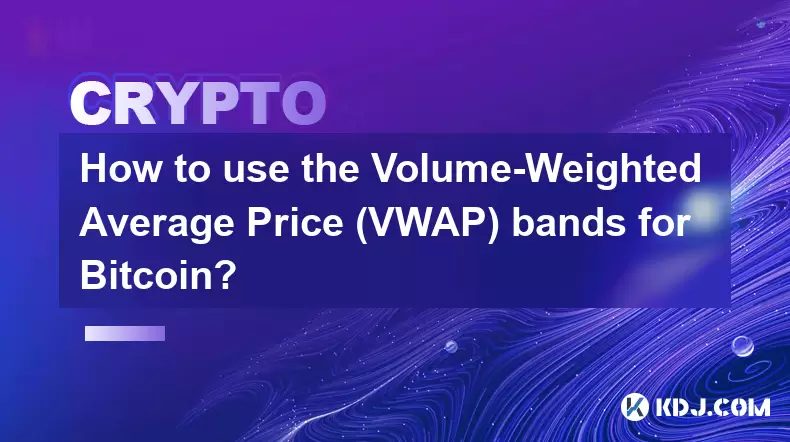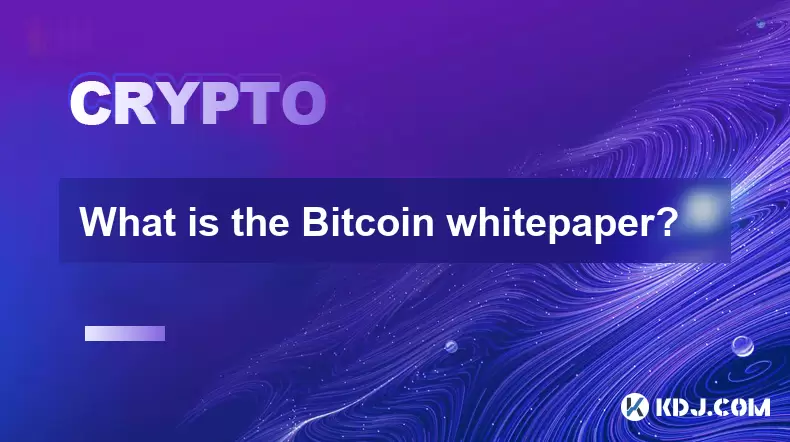-
 Bitcoin
Bitcoin $108,262.4325
-1.40% -
 Ethereum
Ethereum $2,518.2882
-2.94% -
 Tether USDt
Tether USDt $1.0003
-0.01% -
 XRP
XRP $2.2262
-1.71% -
 BNB
BNB $653.9254
-1.55% -
 Solana
Solana $148.1036
-3.11% -
 USDC
USDC $1.0000
0.01% -
 TRON
TRON $0.2829
-1.45% -
 Dogecoin
Dogecoin $0.1639
-4.82% -
 Cardano
Cardano $0.5742
-4.43% -
 Hyperliquid
Hyperliquid $38.9506
-3.95% -
 Sui
Sui $2.9040
-4.34% -
 Bitcoin Cash
Bitcoin Cash $484.8307
-2.62% -
 Chainlink
Chainlink $13.1971
-3.73% -
 UNUS SED LEO
UNUS SED LEO $9.0822
0.51% -
 Avalanche
Avalanche $17.8613
-4.01% -
 Stellar
Stellar $0.2385
-2.26% -
 Toncoin
Toncoin $2.7570
-3.88% -
 Shiba Inu
Shiba Inu $0.0...01145
-3.99% -
 Litecoin
Litecoin $86.9999
-2.43% -
 Hedera
Hedera $0.1538
-3.90% -
 Monero
Monero $313.7554
-2.03% -
 Polkadot
Polkadot $3.3681
-5.08% -
 Dai
Dai $1.0000
0.00% -
 Ethena USDe
Ethena USDe $1.0001
-0.01% -
 Bitget Token
Bitget Token $4.4401
-2.97% -
 Uniswap
Uniswap $6.9644
-8.41% -
 Pepe
Pepe $0.0...09666
-4.79% -
 Aave
Aave $266.5686
-5.04% -
 Pi
Pi $0.4713
-4.95%
How to send Bitcoin from Gemini wallet to Bitget
To send Bitcoin from Gemini to Bitget, verify accounts, enter Bitget's deposit address on Gemini, and initiate transfer, ensuring to cover fees and double-check the address.
Apr 07, 2025 at 05:14 am

Sending Bitcoin from your Gemini wallet to Bitget involves a few straightforward steps. First, you need to ensure that you have a verified account on both platforms. Once your accounts are set up, you'll need to navigate to the withdrawal section on Gemini, enter the Bitget Bitcoin deposit address, and initiate the transfer. It's crucial to double-check the address to avoid any errors, as Bitcoin transactions are irreversible. Additionally, be aware of any fees associated with the transfer and the time it might take for the transaction to be processed on the blockchain.
Before you start the process, make sure you have enough Bitcoin in your Gemini wallet to cover both the amount you want to send and any potential transaction fees. Gemini might charge a withdrawal fee, and the Bitcoin network itself has a fee for processing transactions. These fees can vary based on network congestion and the priority you set for your transaction. Once you've confirmed your balance, you can proceed with the transfer.
Preparing for the Transfer
To begin, log into your Gemini account. Navigate to the 'Transfer' or 'Withdraw' section, usually found under the 'Balances' or 'Transactions' tab. Here, you'll select Bitcoin as the cryptocurrency you want to withdraw. You'll then be prompted to enter the destination address, which in this case is your Bitget Bitcoin deposit address. It's essential to copy this address directly from Bitget to avoid any mistakes.
Obtaining the Bitget Deposit Address
To get your Bitget Bitcoin deposit address, log into your Bitget account. Go to the 'Deposit' section, and select Bitcoin from the list of available cryptocurrencies. Bitget will generate a unique deposit address for you. Copy this address carefully, as any errors could result in the loss of your funds. Some platforms also offer a QR code that you can scan for added convenience.
Initiating the Transfer on Gemini
Once you have the Bitget deposit address, return to Gemini. Paste the address into the withdrawal form. You'll also need to specify the amount of Bitcoin you want to send. Double-check the address and the amount before proceeding. Gemini may ask you to confirm the transaction through an email or two-factor authentication (2FA) for added security. After confirming, the transaction will be initiated.
Understanding Transaction Fees and Times
When sending Bitcoin, you'll encounter two types of fees: the withdrawal fee charged by Gemini and the network fee for processing the transaction on the Bitcoin blockchain. The withdrawal fee is usually a fixed amount, while the network fee can vary. You can choose the priority of your transaction, with higher fees resulting in faster processing times. Bitcoin transactions typically take anywhere from 10 minutes to an hour to be confirmed, depending on network congestion.
Monitoring the Transaction
After initiating the transfer, you can monitor its progress using a Bitcoin blockchain explorer. Gemini will provide you with a transaction ID (TXID) that you can use to track your transaction. Enter this TXID into a blockchain explorer like Blockchain.com or BlockCypher to see the status of your transfer. Once the transaction is confirmed on the blockchain, the Bitcoin should appear in your Bitget account, usually within a few minutes to an hour after the final confirmation.
Verifying the Transfer on Bitget
Once the transaction is complete, log into your Bitget account to verify that the Bitcoin has been credited to your wallet. The funds should appear in your balance shortly after the transaction is confirmed on the blockchain. If you don't see the funds immediately, give it some time, as it can take a bit longer during periods of high network activity. If the funds still don't appear after a reasonable amount of time, contact Bitget's customer support for assistance.
Common Issues and Troubleshooting
Sometimes, issues can arise during the transfer process. If you encounter any problems, here are some common issues and how to address them:
- Incorrect Address: If you entered the wrong address, the Bitcoin will be sent to that address, and it's usually impossible to recover. Always double-check the address before sending.
- Insufficient Funds: Ensure you have enough Bitcoin to cover the amount you want to send and the associated fees. If you don't, the transaction will fail.
- Network Congestion: During times of high network activity, transactions can take longer to process. Be patient and monitor the transaction using a blockchain explorer.
- Platform Issues: If Gemini or Bitget is experiencing technical difficulties, your transaction might be delayed. Check the status pages of both platforms for any reported issues.
Security Considerations
When transferring Bitcoin, security should be a top priority. Always use strong, unique passwords for your accounts and enable two-factor authentication (2FA) wherever possible. Be cautious of phishing attempts and never share your private keys or seed phrases with anyone. Additionally, consider using a hardware wallet for storing large amounts of Bitcoin, as it provides an extra layer of security against online threats.
Best Practices for Future Transfers
To ensure smooth and secure future transfers, follow these best practices:
- Verify Addresses: Always double-check the destination address before sending any cryptocurrency.
- Use Small Test Transactions: If you're unsure about the process, start with a small test transaction to ensure everything works as expected.
- Keep Records: Keep a record of your transaction IDs and addresses for future reference and troubleshooting.
- Stay Informed: Keep up-to-date with the latest news and developments in the cryptocurrency space, as changes can affect transaction fees and processing times.
Common Questions Related to Sending Bitcoin from Gemini to Bitget
Q: How long does it take to transfer Bitcoin from Gemini to Bitget?
A: The transfer time can vary based on network congestion, but typically, it takes between 10 minutes to an hour for the transaction to be confirmed on the blockchain. Once confirmed, the Bitcoin should appear in your Bitget account shortly after.
Q: What fees are involved in sending Bitcoin from Gemini to Bitget?
A: There are two types of fees: the withdrawal fee charged by Gemini, which is usually a fixed amount, and the network fee for processing the transaction on the Bitcoin blockchain, which can vary based on the priority you set for your transaction.
Q: How can I ensure the security of my Bitcoin transfer?
A: To ensure the security of your transfer, use strong passwords, enable two-factor authentication (2FA), double-check the destination address, and be cautious of phishing attempts. Consider using a hardware wallet for storing large amounts of Bitcoin.
Q: What should I do if my Bitcoin doesn't appear in my Bitget account after the transfer?
A: If your Bitcoin doesn't appear in your Bitget account after the transfer, first check the transaction status using a blockchain explorer. If the transaction is confirmed but the funds are still not visible, contact Bitget's customer support for assistance.
Q: Can I cancel a Bitcoin transaction after it has been initiated?
A: No, Bitcoin transactions are irreversible once they are initiated. It's crucial to double-check all details before sending the transaction.
Disclaimer:info@kdj.com
The information provided is not trading advice. kdj.com does not assume any responsibility for any investments made based on the information provided in this article. Cryptocurrencies are highly volatile and it is highly recommended that you invest with caution after thorough research!
If you believe that the content used on this website infringes your copyright, please contact us immediately (info@kdj.com) and we will delete it promptly.
- Bitcoin's Pattern Break: Are HODLers the Key to the Next Surge?
- 2025-07-04 18:50:12
- Bitcoin Price, Trump's Bill, and the $150K Dream: A NYC Take
- 2025-07-04 19:50:12
- Ethereum, LILPEPE, and the July Bounce: Will Pepe Steal ETH's Thunder?
- 2025-07-04 19:10:12
- Binance Institutional Loans: Unlocking 4x Leverage and Zero Interest for Whales
- 2025-07-04 19:15:12
- Bitcoin Bull Run: Analysts Eye Peak in Late 2025?
- 2025-07-04 19:20:13
- Pepe Indicators, Bullish Forecast: Can the Meme Coin Rally?
- 2025-07-04 19:25:12
Related knowledge

What is the Woodies CCI indicator and can it be used for Bitcoin?
Jul 04,2025 at 05:14pm
Understanding the Woodies CCI IndicatorThe Woodies CCI indicator is a variation of the traditional Commodity Channel Index (CCI), which was originally developed by Donald Lambert. The standard CCI measures the current price level relative to an average price over a given period, typically 14. However, the Woodies version modifies this calculation to mak...

How to use the Volume-Weighted Average Price (VWAP) bands for Bitcoin?
Jul 04,2025 at 04:28pm
Understanding the Basics of VWAP BandsThe Volume-Weighted Average Price (VWAP) is a key metric used in trading to determine the average price at which an asset, such as Bitcoin, has traded throughout the day. It takes into account both volume and price, making it more reliable than a simple moving average. VWAP bands are essentially standard deviation c...

What is the VWAP indicator and how to use it for Bitcoin?
Jul 04,2025 at 05:28pm
Understanding the VWAP IndicatorThe VWAP (Volume Weighted Average Price) is a technical analysis tool used to determine the average price a cryptocurrency has traded at throughout the day, based on both volume and price. It provides traders with insights into the true average value of an asset by giving more weight to periods where trading volume was hi...

How to read Bitcoin candlestick charts for beginners?
Jul 04,2025 at 11:22am
Understanding the Basics of Candlestick ChartsCandlestick charts are a popular tool used in cryptocurrency trading to analyze price movements. Each candlestick represents a specific time period, such as one minute, five minutes, or even one day. For beginners, understanding how to interpret these charts is crucial for making informed trading decisions. ...

What is the role of Satoshi Nakamoto in Bitcoin?
Jul 04,2025 at 03:14am
Who is Satoshi Nakamoto?Satoshi Nakamoto is the pseudonymous individual or group responsible for creating Bitcoin, the world's first decentralized digital currency. Despite extensive research and speculation, the true identity of Satoshi Nakamoto remains unknown. The name was used in communications related to the development and release of the Bitcoin w...

What is the Bitcoin whitepaper?
Jul 04,2025 at 01:42am
What is the Bitcoin Whitepaper?The Bitcoin whitepaper is a foundational document published in 2008 by an individual or group using the pseudonym Satoshi Nakamoto. Titled 'Bitcoin: A Peer-to-Peer Electronic Cash System', it outlines the theoretical framework and technical specifications for creating a decentralized digital currency. This paper introduced...

What is the Woodies CCI indicator and can it be used for Bitcoin?
Jul 04,2025 at 05:14pm
Understanding the Woodies CCI IndicatorThe Woodies CCI indicator is a variation of the traditional Commodity Channel Index (CCI), which was originally developed by Donald Lambert. The standard CCI measures the current price level relative to an average price over a given period, typically 14. However, the Woodies version modifies this calculation to mak...

How to use the Volume-Weighted Average Price (VWAP) bands for Bitcoin?
Jul 04,2025 at 04:28pm
Understanding the Basics of VWAP BandsThe Volume-Weighted Average Price (VWAP) is a key metric used in trading to determine the average price at which an asset, such as Bitcoin, has traded throughout the day. It takes into account both volume and price, making it more reliable than a simple moving average. VWAP bands are essentially standard deviation c...

What is the VWAP indicator and how to use it for Bitcoin?
Jul 04,2025 at 05:28pm
Understanding the VWAP IndicatorThe VWAP (Volume Weighted Average Price) is a technical analysis tool used to determine the average price a cryptocurrency has traded at throughout the day, based on both volume and price. It provides traders with insights into the true average value of an asset by giving more weight to periods where trading volume was hi...

How to read Bitcoin candlestick charts for beginners?
Jul 04,2025 at 11:22am
Understanding the Basics of Candlestick ChartsCandlestick charts are a popular tool used in cryptocurrency trading to analyze price movements. Each candlestick represents a specific time period, such as one minute, five minutes, or even one day. For beginners, understanding how to interpret these charts is crucial for making informed trading decisions. ...

What is the role of Satoshi Nakamoto in Bitcoin?
Jul 04,2025 at 03:14am
Who is Satoshi Nakamoto?Satoshi Nakamoto is the pseudonymous individual or group responsible for creating Bitcoin, the world's first decentralized digital currency. Despite extensive research and speculation, the true identity of Satoshi Nakamoto remains unknown. The name was used in communications related to the development and release of the Bitcoin w...

What is the Bitcoin whitepaper?
Jul 04,2025 at 01:42am
What is the Bitcoin Whitepaper?The Bitcoin whitepaper is a foundational document published in 2008 by an individual or group using the pseudonym Satoshi Nakamoto. Titled 'Bitcoin: A Peer-to-Peer Electronic Cash System', it outlines the theoretical framework and technical specifications for creating a decentralized digital currency. This paper introduced...
See all articles

























































































